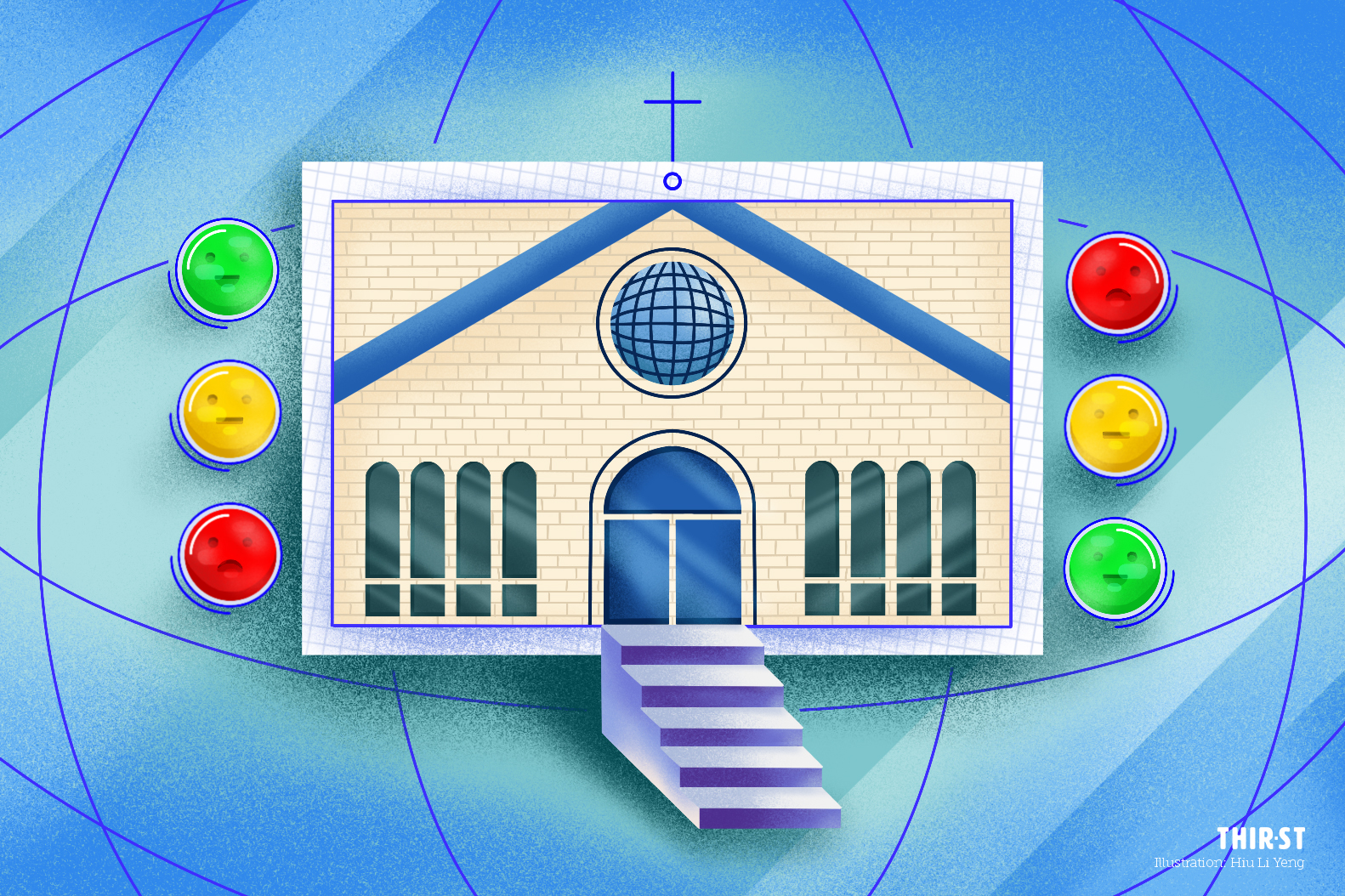After more than three months of church services not being held physically, how do Christians feel about the online church experience? Have they stayed connected to the same communities they were part of before the circuit breaker? What is the state of their spiritual health?
Questions like these were explored in a recent survey conducted by Thir.st and Salt&Light, which also sought to understand how Christians were responding to the gradual reopening of churches.
Where relevant, we look at how these results compare to recent findings published by Barna on how churchgoers in the US have responded to this era of digital church.
4 THINGS WE LEARNT FROM OUR SURVEY
1. Good news: Young or old, most have been attending online church regularly.
Of 376 respondents surveyed at the end of June, a week after news of Singapore’s Phase 2 recovery plan was announced, 90.4% said that they attended online church regularly. Only 8% responded that they were attending “occasionally”, while 1.6% said “not at all”.
A breakdown of these figures by demographics also showed that this trend was true across generations, although it should be noted that our sample size is limited for certain age groups, and by virtue of being an online survey might favour the digitally savvy.
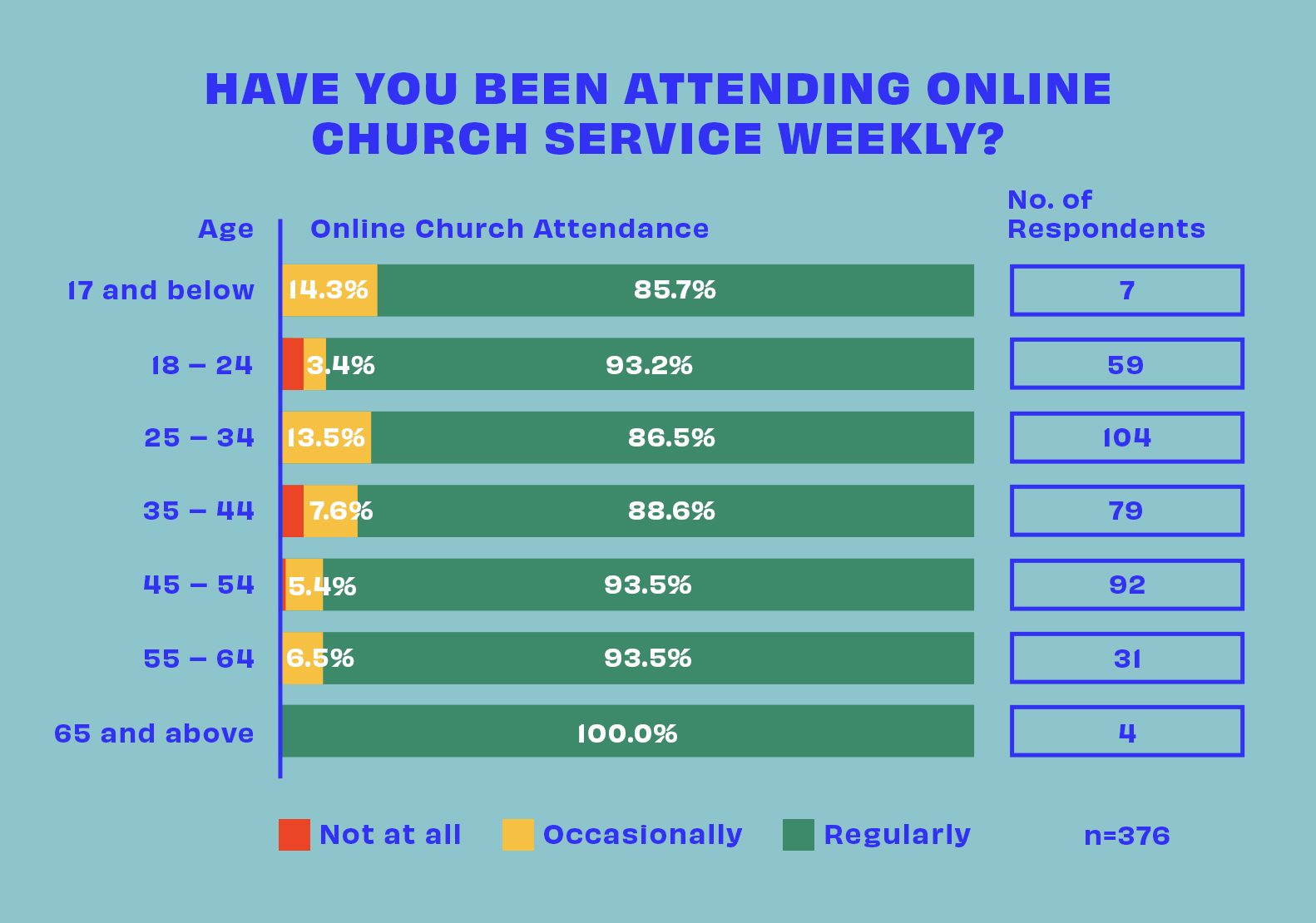
Interestingly, this stands in stark contrast with what has happened in the US. According to recent data, 1 in 3 practicing Christians (32% of respondents) have stopped attending church services during COVID-19.
Barna further investigated online church attendance by age group (Boomers, Gen X and Millennials). Half of Millennials in the US survey have stopped attending church altogether.
Researchers made this observation: “Though younger generations might be more accustomed to digital routines and innovations, their tenuous relationship with institutions seems to persist during this era of digital church.
“These trends highlight the importance of churches continuing to reach out to and disciple the next generation, especially those who are seemingly falling away during the pandemic.”
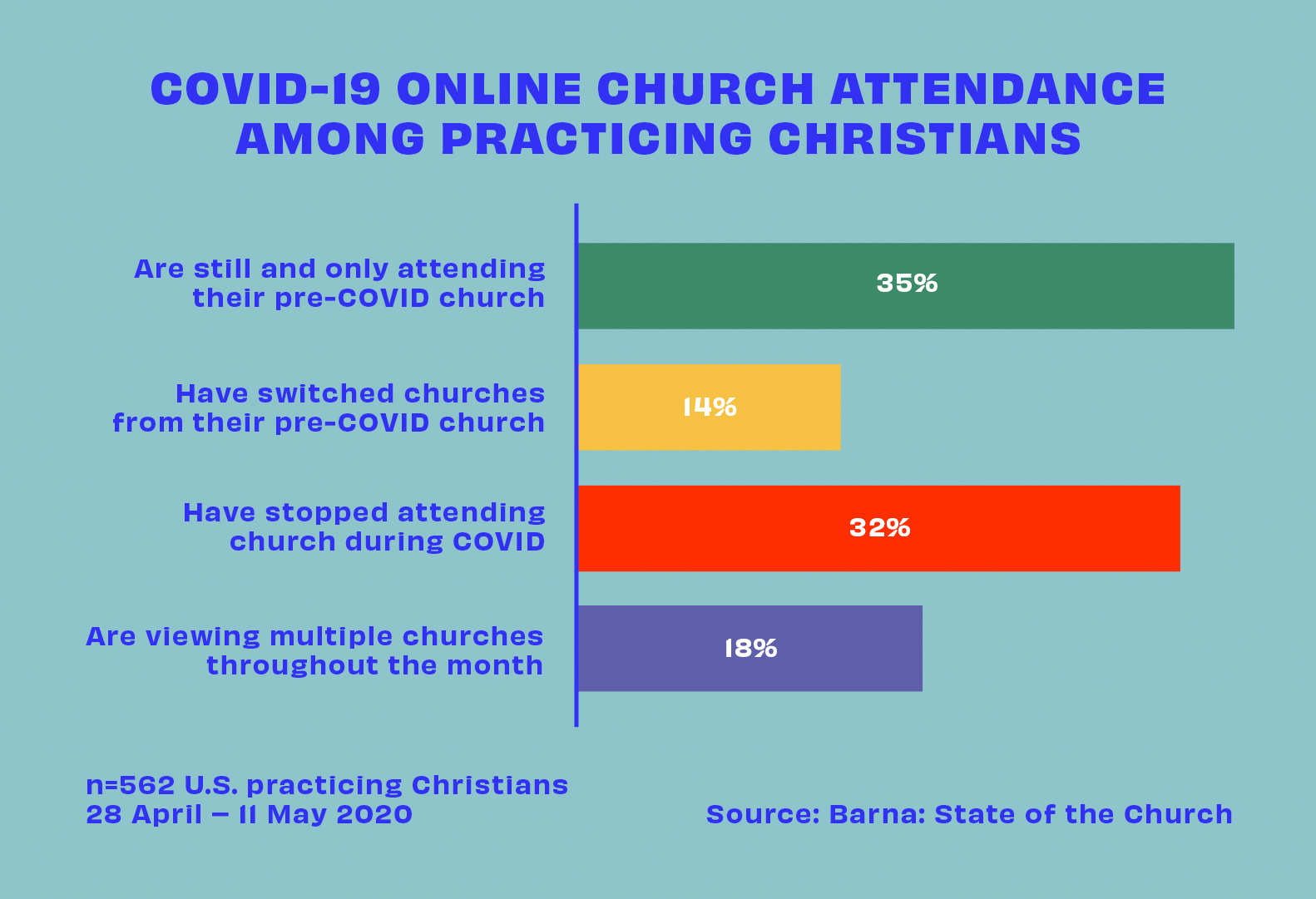
Though such a worrying statistic has not quite been seen here, Barna’s insights are a good reminder that we shouldn’t assume that digital natives would necessarily be engaged when it comes to a digital church model.
It will also be highlighted later in the article, but the need to strengthen discipleship and build relationships among young adults and youths in our church continues to be key, as seen from responses on how they are coping emotionally and spiritually.
2. Church hopping? Not quite. Youths and young adults are more likely to stick with just attending their own church’s online service.
About half (49.9%) of the respondents to our survey only attended online services from their own church, while 42.1% also visited other churches’ services in addition to that from their home church. That means 92% visited their home church’s online service.
Contrast this to the small percentage who said they attended another church’s online service exclusively (3.7%), or who will visit any church’s online service (2.9%).
Clearly, the shift from physical to online church has made it convenient to explore how other churches are conducting their services – an opportunity that older churchgoers seemed to have maximised more.
Older respondents were more likely to attend online services from churches other than their own – 47.6% of those aged 35 and above, compared to 35.3% of those below 35.
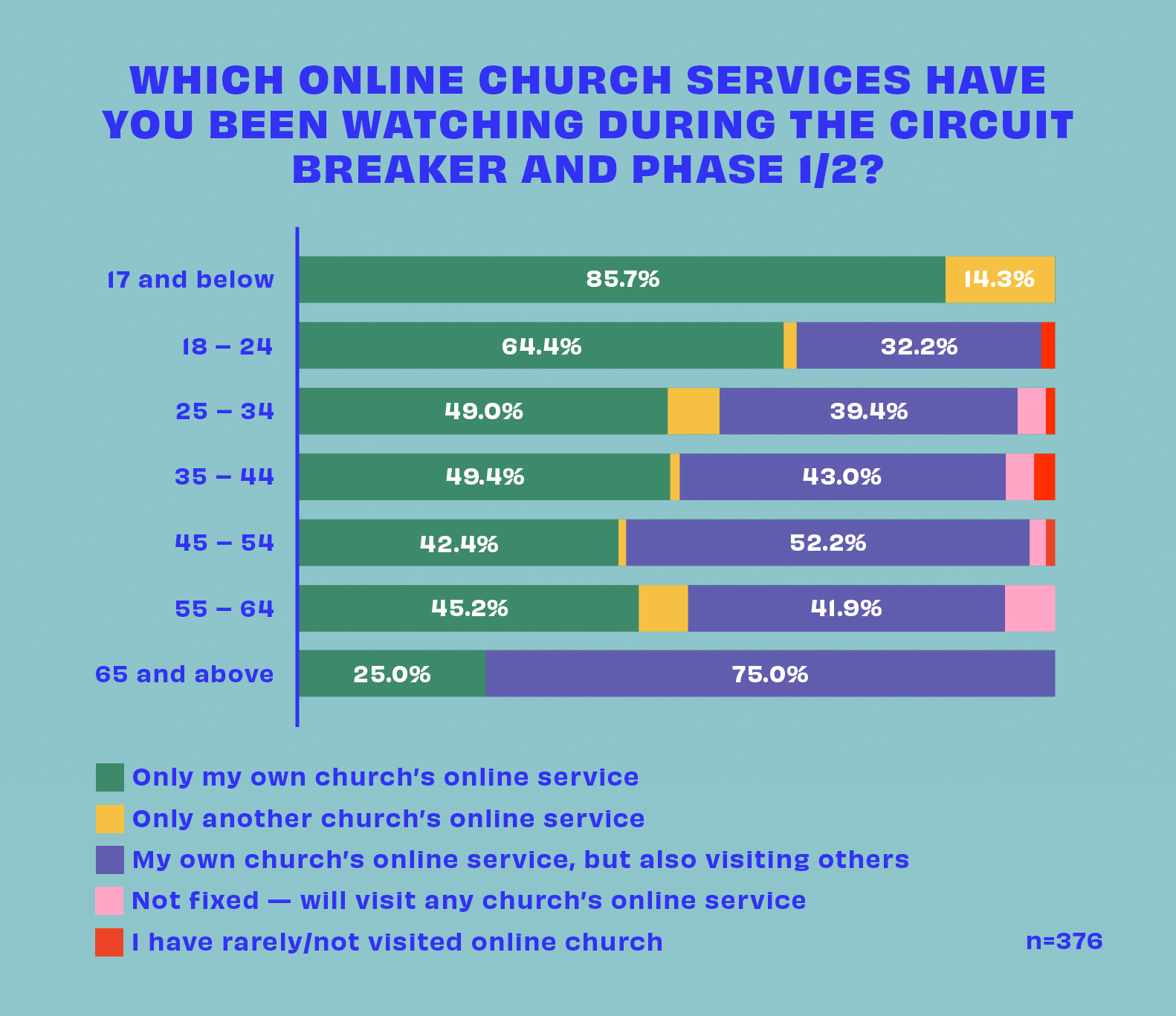
We also asked respondents how likely they are to still attend online church services when physical services resume.
Of the respondents, 44.8% said they would likely attend both their church’s physical and online services, while 41.3% expressed that they would only attend church in person, and not online. The remaining 13.9% said they preferred the online church experience.
3. Young people are more excited about returning to the physical church.
Younger respondents were more keen on returning to church in person – 51.8% of those under 35 years old compared to 32.5% of those aged 35 and above.
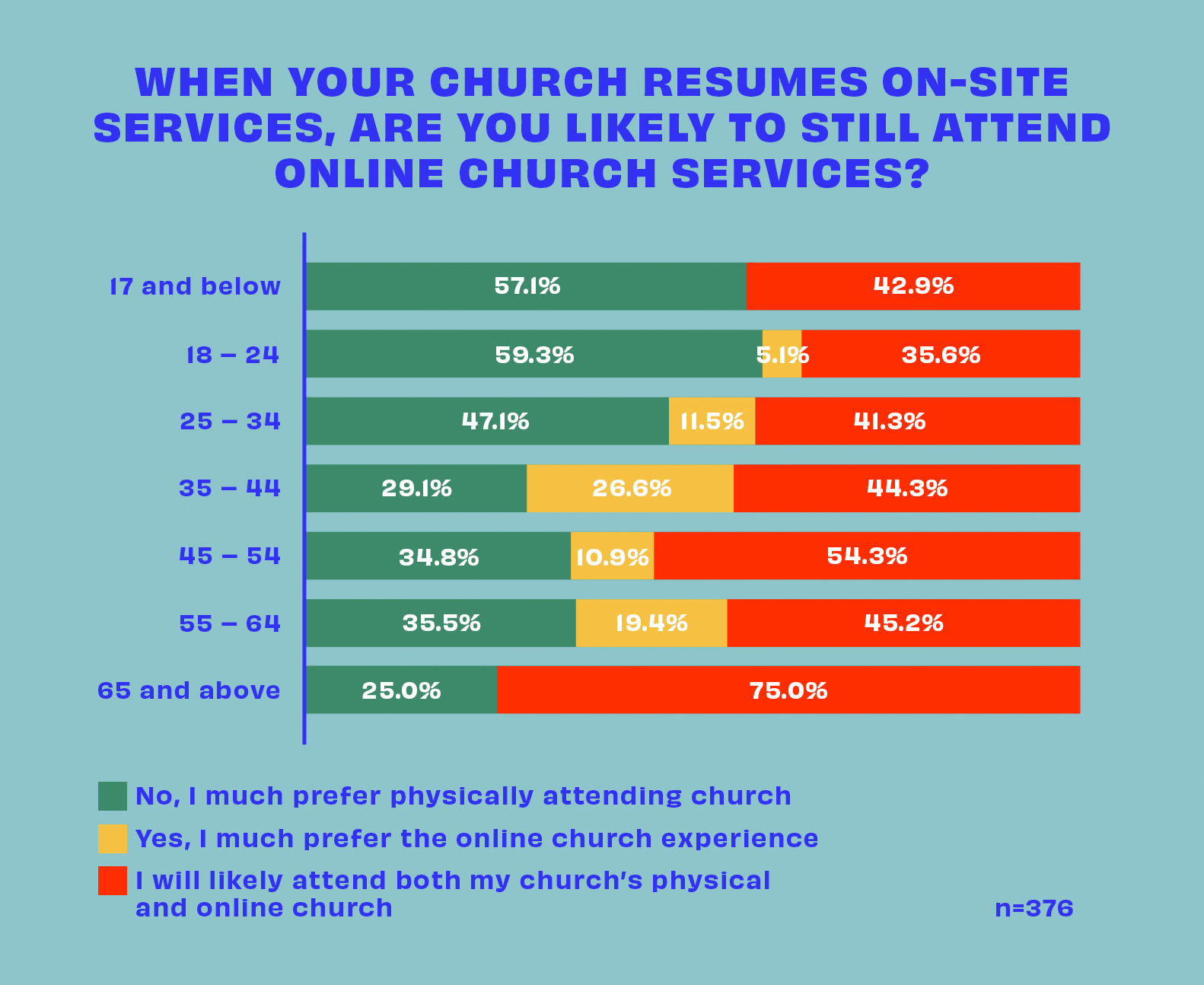
Similarly, a higher proportion (50.6%) of those aged below 35 wanted to “attend physical church services as soon as possible”, compared to 41.3% those 35 years old and above.
Perhaps an explanation for the above trend could lie in this next set of figures: When we asked all respondents about the key factors affecting their decision to attend on-site services, the top two that emerged were health/safety concerns as well as missing physical fellowship with other church members.
But their importance differed across age groups. Of younger respondents aged below 35, 52.4% cited the factor of fellowshipping with other believers, compared to just 37.4% of those aged 35 and above.
4. Younger age groups are more anxious.
While across the generations, 81.1% said that their walk with God had not been affected or was better despite COVID-19 and the circuit breaker, it should be noted that there was a higher proportion of those under 35 years old who said that their walk with God had become worse (27%) – more than double the figure in those 35 years old and older (12.1%).
Similarly, when asked about their emotional state, close to 69.4% said it had not been affected or was better. However, 39.4% of those aged below 35 said that their emotional state had become worse, compared to 23.3% of those aged 35 and above.
More tellingly, the current level of stress, anxiety, fear or worry appeared to be higher in the younger generations. 41.8% of those below 35 rated their current level of anxiety as “I am extremely anxious” or “I am somewhat anxious” compared to 21.8% of those 35 and above.
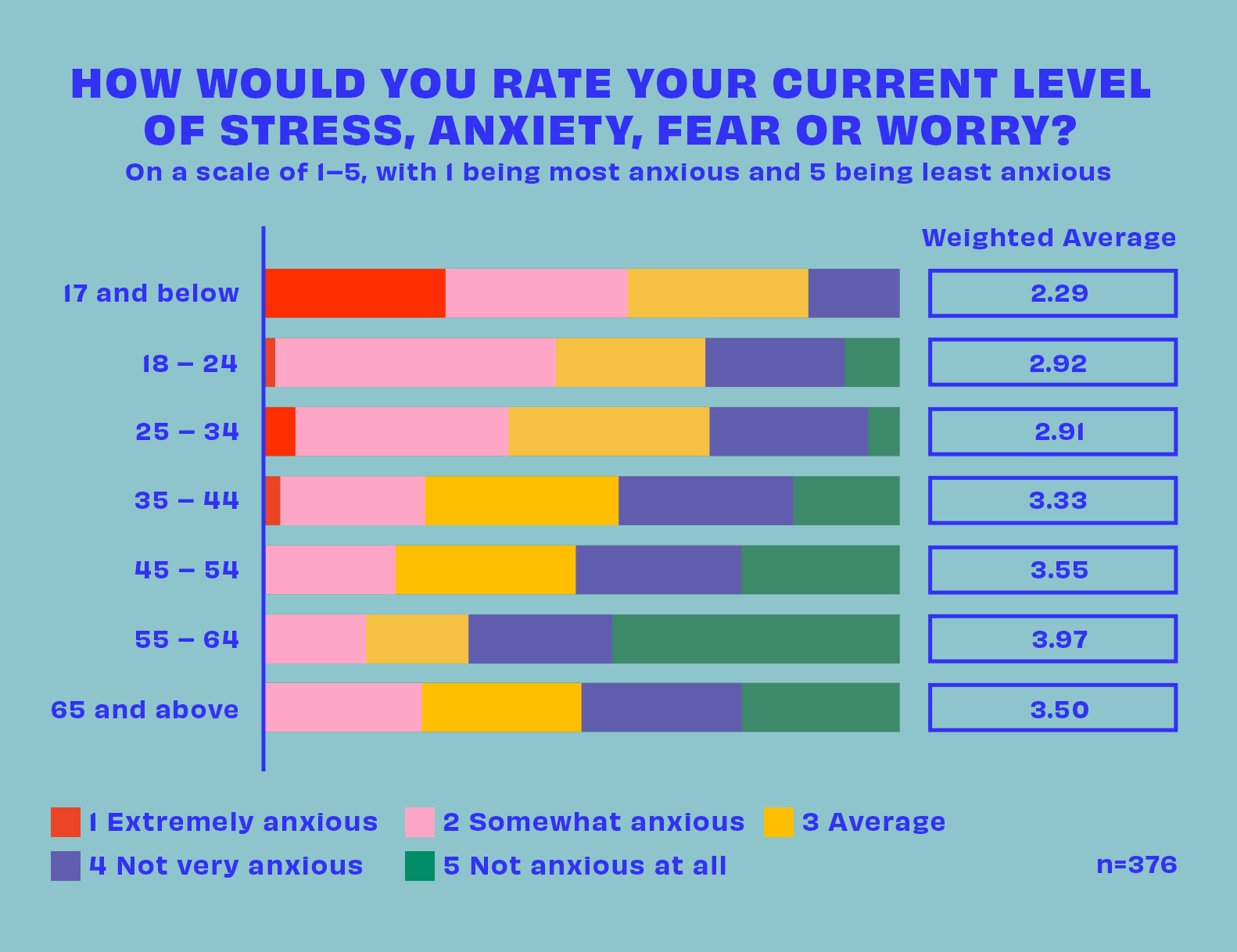
Taken in context with the findings earlier mentioned, it may well be that young people are feeling more isolated and are yearning for face-to-face fellowship with their usual Christian communities.
Seeing as how health and safety considerations are among their top concerns, this may also explain their anxiety levels as their high social media usage increases their exposure to an unrelenting flow of news updates.

In the US, it was seen in the Barna survey that the emotional burdens were greater among practicing Christians who have reduced or stopped attending church.
While it is encouraging to see from our straw poll that most continued to attend online worship services regularly over the last few months, what we wouldn’t have been able to tell is how engaged they’ve been with their church communities.
However, as churches start to resume physical services and activities, it will certainly mean more opportunities to be connected with our family of believers.
After all, our journey as disciples of Christ has always been about our personal walk as well as our fellowship with community.
For those of us who feel that our walk with God has become worse, take heart for He is with us even in our dry seasons. Let’s remember to give all our anxieties to God who cares for us (1 Peter 5:7), and find prayer and encouragement by making an effort to surround ourselves with brothers and sisters in Christ.
This was the second in a series of online surveys conducted by the Thirst Collective in response to the COVID-19 situation. Read the findings of our earlier Circuit-Breaker Check-In Survey:
- What do you miss about being part of a physical church service?
- How engaged are you with your church community compared to before the circuit breaker?
- What steps can you take to deepen your connections with your church community despite the current restrictions?


